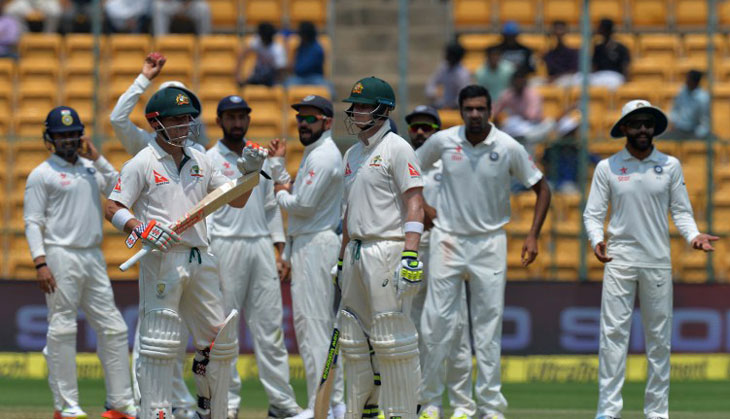Cricket's new laws: Red cards for players, no more big bats
The guardians of the laws of cricket, Marylebone Cricket Club (MCC) have brought in a Code of Law to be implemented from 1 October 2017. From big bats being outlawed to players being red-carded a la football, these new laws are sure to shake up the game. This is the first new Code of Laws since 2000.
The MCC, based out of Lord's in London, has been the sole custodian of the laws of cricket since they were first created way back in 1787. These new laws are a follow-up to the recommendations of the MCC Cricket Committee out of their meeting in Mumbai in early December.
Red cards for behaviour
If the new on-field behaviour rules were in place for the second India vs Australia Test at Bengaluru, both teams would have been penalised thanks to Virat Kohli and Steve Smith respectively. The new laws have been brought in to weed out poor on-field behaviour. There are now four levels of offences which umpires can judge. Basically, umpires are being given more powers to punish any player for their poor behaviour.
- A level one breach is a direct warning. It includes actions like excessive appealing and showing dissent at umpire's decision. First-time offence is a warning. A second level one offence comes with an immediate five-run penalty.
- A level two offence includes throwing the ball at a player or deliberate physical contact. This comes with an immediate five-run penalty.
- A level three offence that includes intimidating an umpire or threatening assault on anyone from player to spectator carries the five-run penalty and removal of a player from the field of play for a stipulated number of overs.
- A level four offence (the highest level) includes a threat to an umpire of any act of violence on the field of player is grounds for immediate dismissal from the field of play for the remainder of the game. If said person is batting at the time, he/she will be given 'retired out'.
Bat sizes
There are new stipulations regarding the size of the bat used in cricket. The new sizes have been set at 108mm in width, 67mm in depth with 40mm edges. Ponting had earlier pointed out that some bats have edges up to 50mm and that was a grave concern. At the international level, a bat gauge will be used. At the amateur level, there will be a certain period of time given to the players to continue with their current bat sizes.
"The bat size issue has been heavily scrutinised and discussed in recent years," MCC's John Stephenson said in a press release. "We believe the maximum dimensions we have set will help redress the balance between bat and ball, while still allowing the explosive, big hitting we all enjoy".
"The bat size issue has been heavily scrutinised and discussed in recent years," MCC's John Stephenson said in a press release. "We believe the maximum dimensions we have set will help redress the balance between bat and ball, while still allowing the explosive, big hitting we all enjoy".
Run outs
While the change in bat sizes is in favour of the bowler, the run-out changes favour the batsmen. The change here is that a batsman will not be given out if his/her bat has been grounded, crossed the line and then bounces in the air while the stumps are broken.
Here's the wording from the MCC statement: "An MCC statement said. "If the bat (held by the hand) or another part of the batsman's person is grounded beyond the popping crease and this contact with the ground is subsequently lost when the wicket is put down, the batsman will be protected from being run-out if he/she is running or diving and has continued forward momentum towards the stumps and beyond."
Run-out to non-striker
Currently, the ICC rules read "The bowler is permitted, before releasing the ball and provided he has not completed his usual delivery swing, to attempt to run-out the non-striker," while the MCC laws state, that the run-out attempt has to come before the bowler has entered their delivery stride. Now, the MCC has amended this to say that a bowler can attempt a run-out at any given point until the ball has been released.
Possible number of dismissals
The number of dismissals possible in a game of cricket has now been reduced from 10 to nine as 'Handled the ball' is being clubbed with 'Obstructed the field'.
The laws have for the first time been updated to be written in a language that is gender neutral reflecting the increasing popularity of the women's game.
- Why artificial turf may truly be bad for kids
- What killed Punjab's sports industry? Here's why we import hockey sticks from Pak
- India's most dangerous woman: MMA fighter Asha Roka sets sights on Olympics
- When love is war: Super Fight League has an ass-kicking husband-wife duo
- Watch: Super Fight League star Jason Solomon on what makes him the Delhi Don

